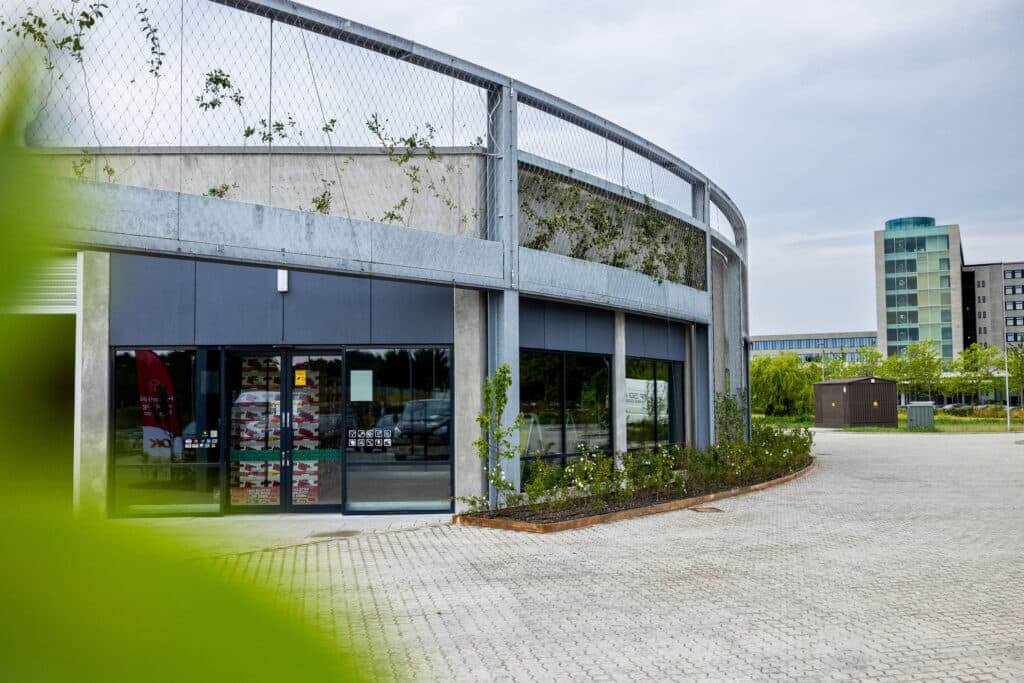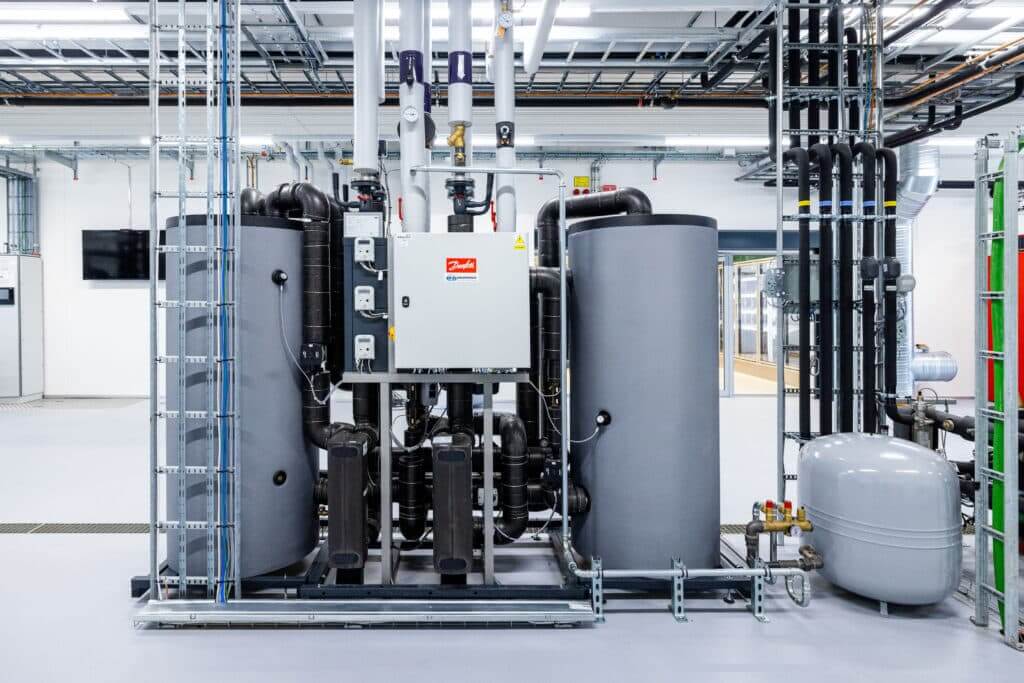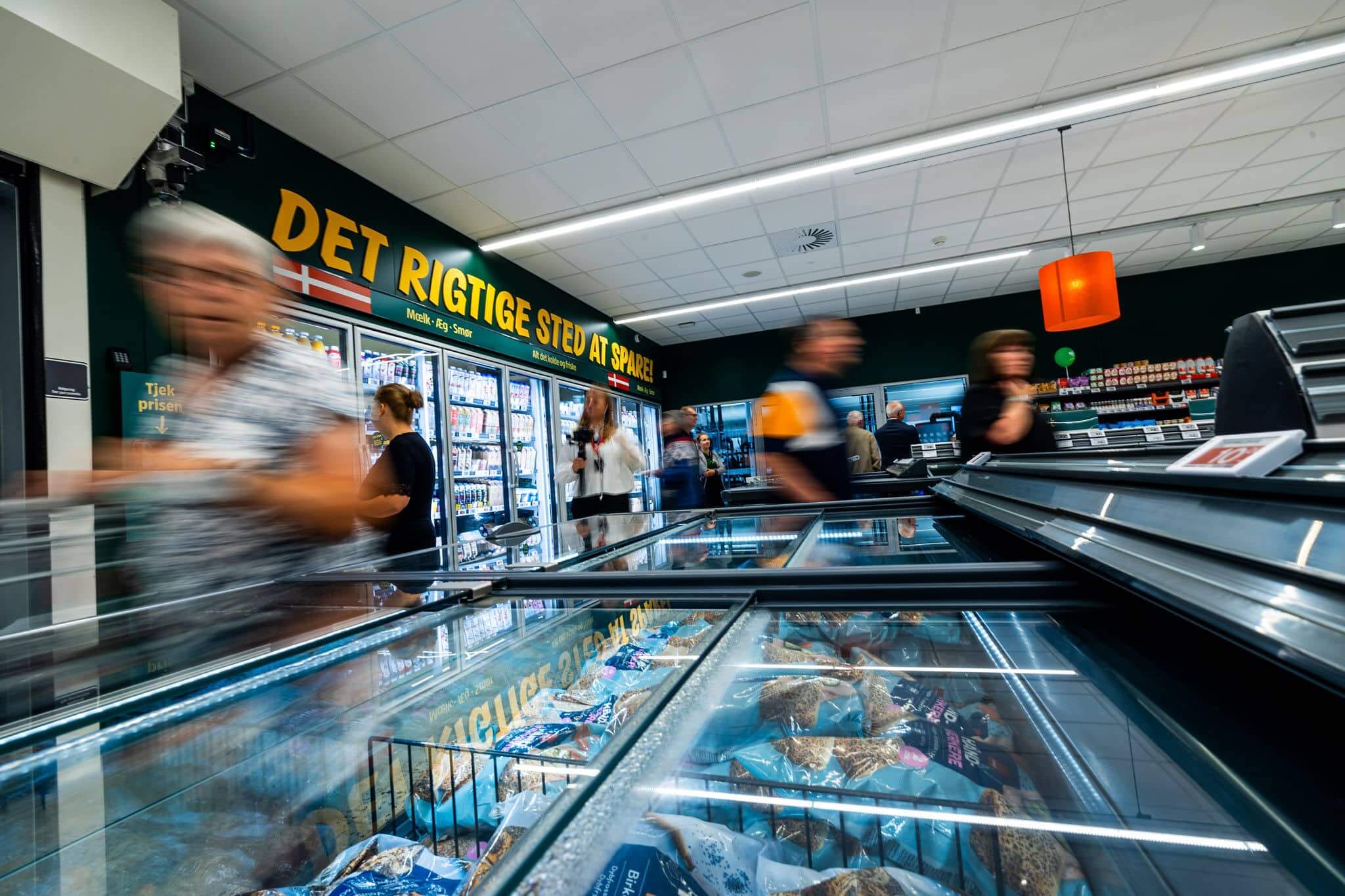Usually, it’s chilly in the refrigerated aisle. But as I walk past the smoked cheese and herring roll mops in what looks like a typical Danish supermarket, the temperature feels surprisingly ambient. Inside this flagship Smart Store in the small town of Nordborg, hardly any cold air escapes from these fridges, and excess heat gets captured for reuse, reducing heating costs by a staggering 90 per cent.
While aeroplanes and cows so often dominate greenhouse gas conversations, you might not think supermarket fridges are a big part of the problem. But supermarkets currently use around three per cent of the total electricity used in industrialised countries, and their refrigeration systems are the biggest culprit.
They also hold the key to some of the biggest sustainability wins. Excess heat is the world’s biggest untapped energy resource, according to a white paper by engineering firm Danfoss. Simply using more of the energy we already produce could reduce global emissions by a third of the amount required to achieve net zero by 2050.
Meanwhile, food waste accounts for 10 per cent of all greenhouse gas emissions. Keeping fridges at precise temperatures across supermarkets and the supply chain keeps vast amounts of food out of the bin, but it requires a huge amount of energy to do this.
Refrigeration, reimagined
So, what’s in store? Unsurprisingly, there are lots of solar panels, LED lighting, a green roof, plus rainwater collection to water the planted pergola that surrounds the building. The Smart Store uses C02 to run its refrigeration system, a natural and efficient alternative to the traditional hydrofluorocarbon chemical refrigerants, which have a 4,000-times higher global warming impact.
But the real magic lies behind a big glass window in the far corner of the store. This complex network of shiny pipes, valves and flashing screens measures everything from the current temperature in the cheese fridge to the optimum time to cool the freezer. Effectively, this system acts like a thermal battery: freezer temperatures can be lowered while energy is cheap, and cooling compressors switched off until the higher cost periods have passed.
This complex network of shiny pipes, valves and flashing screens measures everything from the current temperature in the cheese fridge to the optimum time to cool the freezer.
Fridges and freezers generate heat during the process of cooling: in this store, that heat is captured and used to warm the store or produce hot water for local housing. “Before, the heat would just go to the birds, and now we can sell it back via the district heating system – this is the difference,” says Ejnar Luckmann, the Smart Store’s technical manager, who has worked for Danfoss, the engineering firm behind this supermarket, for almost 40 years. For him, this project is the culmination of a career spent applying hi-tech solutions to real world problems. It’s this district heating grid that makes Denmark one of the most energy-efficient countries in the world and the supermarket has been intentionally designed as an integrated part of Nordborg’s energy ecosystem.

Cooler veg
While buying organic or supporting local farmers is powerful, when it comes to the environmental impact of the food that we eat, so much comes down to what happens within supply chains.
Sue Riley, of UK waste and resources charity Wrap, says the organisation “encourages food businesses in the UK to minimise both their operational food waste and support their customers in cutting food waste at home”. “Our research shows that correct storage of fruit and vegetables at home, in the fridge, can reduce food waste. Improved storage conditions in-store can help do this too,” she says.
Before, the heat would just go to the birds, and now we can sell it back via the district heating system.
Shoppers might wonder why fruit and veg is in closed fridges, but they perhaps won’t notice that those fridges are kept at deliberately different temperatures. That’s because behind the scenes, every cooling unit is being monitored constantly.
Installing doors on fridges and freezers saves about a third on energy use, according to the Environmental Investigation Agency. “There’s no reason why you shouldn’t have several temperatures in a supermarket organised in a good way,” says Jürgen Fischer, president of Danfoss Climate Solutions.
In the Smart Store, monitoring begins as soon as food arrives to guarantee that nothing has exceeded a certain temperature. “Very often, they’d [staff] throw it away because they don’t know what temperature it has been kept at,” says Fischer, who says he expects food loss to be reduced by 40 per cent.

Super scale up
From connecting with district heating, to eliminating food waste and drastically cutting energy use, the benchmark for green supermarkets has certainly evolved.
the supermarket has been intentionally designed as an integrated part of Nordborg’s energy ecosystem.
Solutions vary depending on geographical location. In the UK, Sainsbury’s says it has succeeded in cutting energy by half in some of its Local stores, through installing doors on fridges and a wider focus on energy efficiency. In warmer southern Europe, air conditioning units are the biggest energy drains and an EU-sponsored project is trialling how to integrate fridges, heating and air conditioning systems in Portugal and Italy. In Germany, supermarket Aktiv & Irma has an on-site power plant with batteries that can store surplus energy during sunny and windy weather.
This kind of positive action is much harder to achieve when retrofitting existing supermarkets. One possibility is to sell energy as a service, so like renting a flat, the management of appliances would be included in the fee. “We could buy back all the equipment from a supermarket chain and exchange that for more modern equipment,” says Fischer, who says the same could happen in factories, too, where many processes involve high heat and the release of hot steam directly into the air.
As Nordborg’s purpose-built supermarket opens its doors to customers for the first time, Luckmann keeps a watchful eye on staff, customers and screens. Will fridge doors be left open? Will anyone notice the early warning alarms? He’s putting the tech to the test and knows it’s a challenging task: “We have reached a possibility of trying to bridge [the gap between] these two areas, heating and cooling,” says Luckmann who explains that an interconnected system like this can be as tricky as communicating with someone who doesn’t understand your language.
But with the potential to strip tonnes of emissions out of supermarkets as our biggest food suppliers in the west, it’s time for fridges to step into the spotlight.









0 Comments